Number 8
January 2006
From the retiring editor
I am delighted that Ken Earney, a fellow Marconi Veteran, has agreed to take over the editorship of our Marconi Veterans’ Newsletter with immediate effect. No doubt Ken will be introducing his own personal style, as he and his wife have had a lot of experience in producing a newsletter for the village of Hatfield Peverel where they live. I will from time to time be giving Ken snippets of information in particular on what is happening or not happening with our dear old Marconi units.
First of all let me advise you of the situation as it was in Chelmsford at the early part of October 2005. The Planning Design team of Chelmsford Borough Council had drawn up plans for the ultimate redevelopment of the Marconi New Street site. This included the removal of Building 720 and also Marconi House and the large factory area. A road would be inserted to give access to the Anglia Ruskin University at the bottom end of New Street. The front building would not be altered (I managed to get a preservation order on it long before I retired from the company) but extensions would be made at the rear of this part of the building and where the old factory stood, both housing, light industrial units and a car park would be inÂcluded. Even part of the railway embankment was required in the overall plan.
However, on 14th October, a press release was issued by Selex, the owners of the site, to state that in 2007, the people employed at New Street (some 390) will be moving to an old Marconi site at Christopher Martin Road, Basildon (part of the old Avionics Group). This came as a great surprise to Chelmsford Borough Council who, up until this time, had been in discussion with the management of Selex. The next we heard was that representatives of Chelmsford Borough Council were meeting the chosen developers of the site, with a view to try and get the developers to give the front building to the council. We do not at the time of writing, know the answer to this question. Our local MP Simon Burns was involved in the discusÂsion as the council probably wanted to site the museum at this place. The front building includes the original office of Gugliemo Marconi which I had the privilege of occupying for the last twelve years of my service with Marconi CommunicaÂtion Systems.
We understand that the requirements of the site developers are to build houses on this 30 acre area. However, a rumour exists that Marconi House, the four storey building, might be turned into flats. The new Eastwood House building currently occupied by BAE Systems, is not affected in these negotiations.
Peter Turrall
And now a word from the incoming editor
As Peter has said above, I’ve been involved with the desktop publishing of our village newsletter, the Hatfield Peverel Review, for about ten years. My wife Jackie (of whom more later) is the wordsmith and editor in chief, I’m the assistant editor, picture editor and typesetter. I shall be bringing some of that experience into play with this newsletter, and I hope she will be able to give me some help. The basic format will remain the same, we are largely constrained by the reprographics available to us, but I shall introduce some tweaks to style and presentation that I hope will meet with your approval. I’m afraid the picture of me here is a little bit cheeky: This was a CV photograph taken over ten years ago when I found myself without a position in the GEC organisation and had to ‘actively seek work’, but I guess you would still recognise me from it.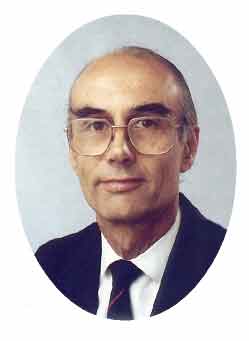
What about my Marconi Veteran credentials? After short term regular service in the RAF, mostly at Watton in Norfolk as an Air Wireless Fitter, I joined Marconi’s Wireless Telegraph Company in September 1960. I worked initially at New Street in Charlie Griffiths’ Aircraft Test on the testing of Green Satin and Blue Silk doppler navigators, concurrently studying for HNC Electrical Engineering at Mid-Essex Tech on day release and in the evenings. This was followed by a year or two attempting to be a development engineer under Geoff Beck in Airadio Navaids Development at Basildon. During these times Imet and married someone who no doubt some of you will remember, Jackie Burroughes, who was then editorial assistant with the house magazine, ‘The Marconi Companies and their people’, and incidentally daughter of Eric (ER) Burroughes (Baddow Research/Marconi South Africa/International Division). This was to be the making of me – her words, but I’m sure she’s right.
Realising that I was not cut out for development engineering, and seduced by the possibility of African travel, we moved to Nairobi, Kenya in 1966 when I got a job in the engineering department of East African Airways. We spent two idyllic years there. The job however turned out to be not so idyllic, so we returned to UK in 1968 – me back to the Marconi Company at Basildon in product support work with Airadio Field Support Group.
I don’t want to go on about me for too long. Suffice it to say that my life from that time until my position ceased to exist in 1992 was occupied with a variety of product support and trials engineering roles in airadio navaids, underwater acoustics and airborne surveillance systems, mainly in the UK, but with some interesting spells overseas.
Several weeks spent in Iraq in the ‘80s was particularly interesting. All of that time I was based at Basildon, and working for essentially the same organisation, but the company name changes over that period were something to marvel at; Marconi Company Limited, Marconi Avionics, Marconi Elliott Avionics Systems Limited (an attack of the measles!), GEC Elliott, GEC Avionics, the list goes on.
My association with GEC/Marconi came to an end in ‘92. I had almost a year of ‘actively seeking work’, then just a year working for Loral Solartron at Hoddesdon in customer support, nearly another year of job seeking, and finally a complete change of pace and culture with a position in Essex Libraries as a relief mobile library manager. This gave me a good mix of work in my base library at Witham, time out on the mobile routes with much of the county’s mobile library fleet, and, as a result of my past experience in industry, the local IT ‘techie’.
Now retired, I’m kept busy by work for the parish council as a co-optee looking after the local footpaths, editing the village newsletter, a little volunteer work for Essex Libraries, advancing my French and struggling with German, singing in three local choirs, walking and cycling (not enough of these two) and failing in DIY around the house – I loathe decorating. And we’d like to visit Africa again whilst we have the health and fitness to enjoy it.
Enough of me and on with the newsletter.
How am I to cope with this mountain of copy, Peter?
Following Peter’s appeal in the 2004 edition for more stories and reminiscences he was inundated with material, which is now my problem. We have enough for about four twelve-page issues by my reckoning. Some of the articles are fairly lengthy, and it hasn’t been possible to include everything received in this edition, so I intend to introduce some of them amongst newly received material next year. In addition, I’ve had discussions with the Webmaster about putting articles and photographs on the website, www.marconi-veterans.com, and we shall be doing this with these items over the coming months. A list of them appears below. If you are not ‘web enabled’ and would like a copy of any one we can post a photocopy to you: please phone the editor on 01245 381235 or contact him via the “contact us” page.
Articles for next year’s newsletter should be sent to Ken Earney, Editor Marconi Veterans’ Newsletter, c/o Barry Powell, Selex Communications Limited, Marconi House, New Street, Chelmsford CM1 1PL, UK or by email to the above address. If illustrations or photographs are to be included they should be high resolution (max 300dpi) jpg or tif digital versions on CD-ROM or via email attachment, address as above. Alternatively please send the original photo or artwork which I will scan and return to you.
Articles for future publication in Website or Newsletter
Allen Buckroyd’s Marconi career
Baddow in 1943 – Roy Simons
Garry Duguid remembers New Street test departments and TV Systems in the 60s
Large group photographs from Walter Cook’s collection. Locations could be Hackbridge, Writtle or New Street
Memories of Test at New Street 1943 to 1974 Tom Gutteridge
Military Scout and Wireless Cars – article which appeared in the Journal of the Morris Register – Harry Edwards
MRSL Leicester – Roy Simons
The Origins of the Display and Data Handling Laboratories at Baddow – Roy Simons
A Marconi Radio Officer’s memories, 1941 to 1953 – Felix Mascarenhas
A Personal Message from the Chairman of the Company to all Marconi Employees – H W Grant, August 1942
Report by D Robertson, the fortunes of MIMCO Singapore personnel, 1942 – 1945
Review of Marconi Radar activities – Roy Simons
An R/O on MV Cape Horn, 1957 to 1959 – Bill Godden
The Winkle (Bard Hill) Hut – Roy Simons
Working Life 1937 to 1981 – Joan Wigley (Staff, Personnel and Training at New Street, Writtle Road, Waterhouse Lane)
You know you’ve had too much of modern living when …..
you’ve tried to enter your password on the microwave.
you wake up at 2am to go to the toilet and check your email on your way back to bed.
Veterans’ reunion 2005 report
The reunion took place as usual at the Marconi Athletic and Social Club in Chelmsford on the 16th April when 220 veterans sat down with their president, George Hill OBE, and Guest of Honour Councillor Christopher Kingsley to enjoy a four course lunch and reminisce with former colleagues. George Hill, previously a member of the Marconi Marine staff and before his retirement Managing Director of Marconi’s outlet in Ankara Turkey, gave a speech on his work in Turkey with one or two amusing incidents.
Councillor Christopher Kingsley is Cabinet Member of the Arts and Museums Committee of Chelmsford Borough Council. He was introduced by Vice Chairman Peter Turrall who, during his introductory speech, hoped that the guest of honour, in his official capacity, would make some positive reference to the work which Marconi Veterans carry out at the borough’s Sandford Mill Industrial Museum. It was at this museum that many Marconi artefacts were gathered by veterans before the main artefacts were handed by Marconi PLC to the Oxford Museum.
In his reply Councillor Kingsley made very positive comments about the Marconi statue. At the time in the bowels of the Essex Record Office in Chelmsford, it would be moved to the centre of Chelmsford High Street following a decision by a small committee which will sort out exact details, and on which a representative of the Marconi Veterans’ Association would become a member . He also stated that Chelmsford Borough Council was very grateful for the voluntary work carried out by Marconi Veterans at the Museum each year. (See Peter Turrall’s piece on page 14 about the current situation).
The theme of Councillor Kingsley’s speech (he was at one time an apprentice and later an engineer in the company at Chelmsford and Basildon, and retired last July as Head of the Fifth Form College in Colchester) was how learned men in the electronics field were, like himself, very much involved in music, either playing piano, guitar, organ or concertina. He quoted many examples of the work they carried out and the instruments they played.
Veterans’ 2006 reunion
This will take place on Saturday 8th April at the MASC. Beehive Lane, Chelmsford, commencing at 1.00 pm. Our president this year is Raymond P Rowe C.Eng. FIEE. Raymond was until his retirement Divisional Manager of Broadcasting Division in Marconi Communication Systems Limited at New Street. Prior to this he was Technical Manager Transmitters in Broadcasting Division when the Technical Laboratories were situated in Building 46 at New Street.
Guest of Honour at the request of our President is Mr Robert Wellbeloved C.Eng. F.I.E.E., formerly Chief Engineer (Transmitter Operations) for the IBA and latterly an Independent Consultant for many UK and overseas organisations, mainly on Digital TV transmissions. Robert joined Marconi Communication Systems in 1956 starting a four year Graduate Apprenticeship followed by installation work on behalf of Broadcasting Division before joining the ITA in 1965 as a Transmitter Engineer.
Wireless College Colwyn Bay Fifth reunion
Peter J Robinson
If it’s not too late, I wonder if you would mention the 5th reunion of The Wireless College, Colwyn Bay (North Wales) that will be taking place in Llandudno on the 25th March 2006. I was an ex-student and went on to be employed by Marconi Marine for 30 years. We have no formal society (and no membership fees) and are united through our website – www.wirelesscollege.co.uk
We presently have over 200 ex-students (from the 1930s to the 1970s) registered on the website, from various parts of the world. Many of them joined Marconi – George Johnson MBE, past president of Marconi Veterans, was a student in the 1930s and has attended our reunions. Joanna Greenlaw is another name you may recognise.
The main Wireless College website is done by David Baker, another ex-student. He and I made contact over 30 years after leaving the college in the late 1960s and the website came into being. I do a ‘Chronicles’ section where, among other things, I have some pictures of Marconi beer mats which might be of some interest – www.wireless.pjrnet.co.uk/html/mimco_beer_mats.html
At the last reunion one chap flew in from Australia for the weekend and another came from the USA.
If there are any ex-students out there they can find information about the college on the website, or if they don’t have internet access they can contact me by telephone on 01745 570321 and be added to our non-email mailing list.
Sandford Mill Museum
There will be an Open Day at the museum on Saturday 22nd April, International Marconi Day, from 10 am to 5 pm, free admission. One of the principal features this year will be a new exhibition in the Marconi broadcasting hut. As usual, the Chelmsford Amateur Radio Society will be participating.
John W Sutherland CBE, MA – a full and active life
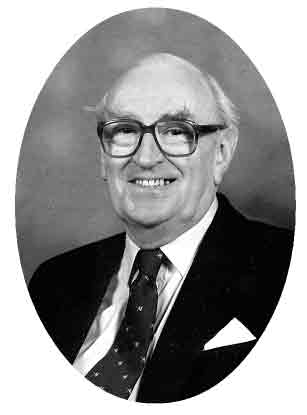 The death occurred on 1st November 2005 at Stow-cum-Quy in Cambridgeshire of John W Sutherland who for many years was Managing Director of Marconi Radar Systems, situated at the old Crompton site in Writtle Road, Chelmsford.
The death occurred on 1st November 2005 at Stow-cum-Quy in Cambridgeshire of John W Sutherland who for many years was Managing Director of Marconi Radar Systems, situated at the old Crompton site in Writtle Road, Chelmsford.
John Sutherland was educated at Queens College Cambridge from 1941-42 and 1946-48, graduating with a BA in 1947 and MA in 1949. He was a Radar Officer in the Royal Navy between 1942 and 1946, serving in the Mediterranean and the Atlantic. After graduating, he served an engineering apprenticeship and became a radar development engineer with Metropolitan Vickers. Whilst there, he worked on the receiver system for a radar which became known as Orange Yeoman, one of the equipments which MRSL inherited after the GEC EEC merger.
He joined Marconi as a radar research engineer at Baddow in 1954, working on the receivers for Passive Detection, and, with considerable involvement in the PD trials, spent a large amount of his time in a hut at the 200 ft level of the Baddow CH tower. He became a project manager in 1956, Manager Defence Projects in 1962 and, following divisional reorganisation in 1965, was appointed Manager Radar Division. Within months of its reorganisation, Radar Division had the largest order book that it had ever held, with the contracts for NATO refurbishment.
As a result of the GEC EEC merger, Marconi Radar Systems Ltd (MRSL) was created to be responsible for the radar activities of AEI, Elliott and Marconi. The company comprised three establishments at Leicester, two at Gateshead as well as Baddow and Writtle Road and three test sites, with John its Managing Director from 1969-83.
John always considered it important to have a radar system in development, to meet potential customers needs and to protect the business against the fluctuations in defence radar procurement. One of the first projects that John initiated resulted from lunch time meetings in the Running Mare, where John, Ellis Robinson (Engineering Manager) and Roy Simons (Technical Director) planned the implementation of the S600 series, which won a Queen’s Award, (central management never signed the development proposal!). The Martello series, which sold world wide, was the final example.
The radar business flourished under John’s leadership, the SEAWOLF GWS25 radar missile system providing large and continuing business.
It was the Defence Review in 1982 that resulted in John’s departure. The MOD cancelled the naval destroyer programme and with it the SEADART 909 radar programme at Leicester. John was appointed Vice Chairman of the Marconi Company in 1982, and he retired from Marconi in 1983.
From 1983 to the early 1990s he was Director of Acorn Computer Group plc, Director MTI Managers Limited (venture capital), and Chairman/Director/Consultant to several high-tech companies. He was President of the Electronic Engineering Association 1980-81 and was awarded a CBE for services to export in 1980.
John moved to Stow-cum-Quy following retirement from Marconi and was actively involved in village life. On the parish council, and chairman for eight years, he was influential in getting affordable housing built in the village. He was a member and treasurer of the Church Building Trust, and the church’s Millennium clock was greatly the result of his endeavours.
In recent times John fought very hard with others to retain the Marconi Archives in Chelmsford. He established a close relationship with Princess Elettra Marconi and was instrumental in getting her involved in this struggle. He was very upset when the archives were finally moved to Oxford University.
Bawdsey Radar Group
Bawdsey Radar Group was formed in September 2003. Its aim is to restore the transmitter block and create an exhibition at Bawdsey as a fitting tribute to the work that was done there to make radar an operational reality. The transmitter block was included in the BBC 2 Restoration Series 2004. This generated a lot of publicity and interest in the group, which has prompted it to produce an oral history of Bawdsey and radar from the mid 1930s to the 1960s.
This project has received funding from the Heritage Lottery Fund and they have recently started the interviews. They are interested in hearing from people with experience of Bawdsey in that period (especially during the war). They are working with the Defence Electronics History Society (DEHS) on the project. The results of the talks will be maintained at Suffolk and Essex Record Offices and at the National Archive. They also aim to produce a short booklet of interview extracts, a DVD of video clips and a schools package.
If you have any stories about working on radars at Bawdsey, please contact David Heath, Bawdsey Radar Group Oral History Project, 57 Longmead Avenue, Great Baddow, Chelmsford CM2 7EG, telephone 01245 471488
Further information about the group and its programme for 2006 can be found on the website at www.bawdseyradargroup.co.uk
Baddow Research 1939

On the rear of this photo – an inkjet print supplied by Peter Turrall – is written ‘Baddow Research 1939’. Can anyone identify the location and any of the individuals shown here? So far I have the following information from Roy Simons.
I suggest that this photo was in fact taken at Writtle, in front of the west side huts in about 1939 showing those engineers who were being moved to Baddow and elsewhere. I did not get to Baddow until 1943 but many of those on the right hand side of the picture were still there.
If the photo had been of Baddow staff in 1939, I am sure that Robb, Swift, Eckersley, Kemp, Fewings, Plaistowe, Lea, Parkin, Murphy, Tweed and Rust would have been in the group, all of whom I would recogÂnise. The first people to move to Baddow in 1938 were the TV research group under Kemp. They occupied the hut which subsequently became the carpenters shop before moving into Room 121.
I recognise a number of faces in the picture, but I can name only a few, all of whom, apart from Wassell, were in Armstrong’s receiver section that occupied rooms 102, 123A and 123B . From the left, front row, are 5 ER Burroughes, 6 HJH Wassell, 7 RB Armstrong, 14 C Percy Beanland, 15 FE Sainsbury, 16 C Peter Cooper. Second row: 4 JK Todd? 14 LJ Van Rooyan. Back row: 9 Dr George L Grisdale, 14 Mervyn M Morgan, 15 ? Watts?
I have the impression that most of those on the left side of the picture were transmitter people and never got to Baddow but went to Building 46 in New Street.
Another memory of the Suitcase Set
Frank Whybrow
I read with interest the article about suitcase sets. When working in Test I was sent to Parson’s Green to carry out mechanical and wiring checks on suitcase sets. For the wiring check we used a device called laughingly an ‘Oxometer’. The test consisted of plugging connectors into valve sockets and the machine would circuit check automatically. Any faults found could then be rectified.
On returning to Parson’s Green after a weekend home the place had been burnt down, the building being an old wooden barracks.
On my return to New Street I was sent to War Office test under a Mr Jacobi, where the sets were tested. They came valved up with EF50s, the cases themselves were made up of receiver, transmitter, and a multipurpose power supply, morse key and aerial. The receivers etc were all put into long biscuit-type tins complete with lids. A later version had a separate case with a hand-cranked battery charger.
I remember working all over Christmas getting the last consignment ready for despatch.
Hope this will be of some interest.
PS: A suitcase set was shown in the TV programme ‘Tricks of War’.
Regretably, as I was attempting to contact Frank by phone to clarify one or two details, I was phoned by his daughter to tell me he died on the 6th January . Ed.
A number of interesting items about the World War 2 era were submitted by Peter Helsdon in response to the appeal for more copy. I have chosen to include this one. Of the other two items, the first is a copy of the personal message from the chairman, Admiral Grant, to all Marconi employees giving advice on actions to be taken in the event of a German invasion, dated August 1942 (other memories of the Admiral’s visit elsewhere in this issue.).
The second item is entitled ‘Auxiliaries Anonymous’ and is in fact a chapter in ‘The Book of Chelmsford’ by Gilbert Torrey, a very interesting read. This chapter deals with local involvement in the British resistance organisation which would have been activated in the event of an invasion and subsequent occupation of this country. It outlines the network of cells that comprised the organisation, and homes in on the cells in the Chelmsford area, in particular the Chelmsford cell itself. With one exception all the members of this cell were Marconi employees. As it exists in a published book, anyone interested can request a copy from Essex Libraries, or attempt to find one from a second-hand bookseller. It was published in 1985 (and so inevitably out of print) by Barracuda Books Ltd of Buckingham, ISBN 0860232655.
Dad’s Army – or 211 (101 Essex Home Guard) Z AA Battery, RA?
Peter Helsdon
We raw recruits were being given arms drill by Sgt X in front of Marconi House. Our first lesson was to stay alert and to come to attention smartly on command. After a few WW1 Parade Ground ‘SHUNs’ followed by ‘STAND EASY’, he wandered a few steps in the direction of the platoon captain, only to swing round with another ‘SHUN’ to catch us sleeping. Unfortunately the second time he tried this, his false teeth shot out onto the parade ground, to the merriment of the troops and the total loss of discipline. This episode prompted the question, was it really like ‘Dad’s Army’?
I met Sgt X in Southborough Rd only a few weeks ago, still hale and hearty, well into his eighties.
Later some of us were posted to ‘J’ Company, with HQ in Mildmay Road where St Johns’ Ambulance is now. Here we were taught ‘battle drill’ with a great assortment of weapons, such as – Browning automatic rifles, Sten guns, Blacker Bombards, spigot mortars, rifle grenades, hand grenades, sticky bombs, and plastic explosives.
The most frightening thing was going on parade in the pitch dark to guard the ammunition dump at the drill hall in Market Road. The problem was the fixed bayonet waving about just in front of your nose held by the rank in front. This worry was resolved when incendiary bombs hit the dump, small arms ammunition went off for hours afterwards, like a firework display. The next most worrying thing was the sausage cooked for breakfast while under canvas at weekend training camps. I didn’t fancy any, but everyone else came out in spots and some missed the Sunday parade.
In late 1942, probably as a decision resulting from the bombing of Marconi’s on the morning of May 9th 1941, there was a dramatic development, which has not had much publicity. One evening I was watching a film at the Select cinema, suddenly there was an alarming hissing roar from outside. As it quickly died away it was obviously going up, not coming down. Later I learnt that it was the Chelmsford Home Guard Anti-Aircraft ‘Z’ Rocket Battery in action for the first time. On the way home afterwards I saw a German plane caught in a crisscross of searchlight beams towards Dunmow. As I watched, that part of the sky erupted in a cube of fire about 400 yards in extent, it was quite shattering in effect. I later heard that the another Home Guard ‘Z’ Battery shared the credit with an RAF night-fighter.
Soon afterwards the rest of the Chelmsford Home Guard was reorganised and many Marconi men then spent one night in eight on duty at the new ‘Z’ Rocket Battery in Central Park. Initial training took place at 185 London Road, followed by live firing out to sea at Walton on the Naze.
In Central Park there were 64 twin rocket projectors, organised in four troops Able, Baker, Charlie and Dog, located on the open area bounded by the river, the lake, Park Road and the then cattle market. Two GL radar cabins operated by ATS girls were sited on the other side of the river in the cricket ground. These cabins were linked to our ops room near Park Road.
Each projector could fire two 3” anti-aircraft rockets having a maximum altitude of 19,000 ft and a ground range of 10,000 yards (5.7 miles). The heavy finned rockets were about six feet long and each had an adjustable nose fuse to be set to explode the warhead at the correct altitude. Two men manned each projector. The commands for altitude, bearing, elevation, loading, etc came over a sound-powered intercom from the operations room to a headphone worn by No 1, who relayed the orders to No 2. Each man set a fuse, No 2 loaded the rockets onto their guide rails and pulled them down onto the electrical firing pins and then set the elevation wheel. The firing pins were connected via safety switches to a firing handle and a 6 volt dry battery. No 1 set the bearing and reported ‘Able 3 ready’; on the command ‘Fire’, he depressed the firing handle. If the rockets misfired, we had to wait 20 minutes before unloading.
The flight path of a rocket is quite different to the simple maths curve governing the ballistics of ordinary AA guns. Our operations room used a plotting table, and a prediction device like a three dimensional slide rule, to give us fuse settings etc from the radar data fed in by the ATS teams. The ‘slide-rule’ scales were prepared from a series of 3” rocket flight tests optically tracked and recorded by a team of ordnance experts sent to the clear skies of the West Indies.
Area command was provided by a master control centre at Sandon that covered all the local AA batteries, including the heavy 3.7” guns down on the Meads and the Bofors along the A12. Defence of local airspace was shared with night fighters, so that quite often we could not engage, but the battery did go into action and claimed hits on several occasions, usually single intruders. One of these came down in flames at Great Leighs.
One night a wave of bombers came in over Clacton and followed the railway line to Chelmsford. Here they dropped flares and then incendiary bombs. The battery went into action several times. One Home Guard was commended for dealing with an incendiary bomb that had hit his rocket dump. In Chelmsford there were many fires, I saw the prison and adjacent houses burning. That night sixty Chelmsford people were killed, many injured and twelve buses destroyed. On duty the next night I saw small bomb craters in a line from the south east corner of the site and across the river towards the radar cabins. This could have been the time a bomb splinter put the Radar out of action and targets had to be engaged visually.
One HG member was renowned for his near miss. One night there were 126 rockets aimed and fired south but his two lonely rounds went north due to a 180º bearing error and just cleared the top of the railway station, but then, it was only Dad’s Army.
When there were no enemy aircraft about, we slept in three large Nissen huts where the present bowling green is now. Site services were provided by regular army staff. Morning tea was made by them in large buckets marked T for each hut. The other buckets, marked P, were emptied down manholes behind the huts, where the present conveniences are located. A very good free supper and breakfast was provided in a canteen near the operations room, as were the occasional concerts given by the Blue Ramblers dance-band. The supper was usually fish and chips, the breakfast porridge and egg, the great mystery was fried spam, was it fish or meat?
In 1944 the flying bombs came in too fast for us to load and fire, we had to leave them to the Mosquito and Typhoon fighters. The ‘Z’ batteries had come to the end of their useful life. We had the standing down parade of the 6th Essex BattalÂion Home Guard on Sunday 3rd December 1944.
I would like to thank the following ex-Home Guards for their help in refining my recollections of the above events : HJ Ecclestone, E Cranston, RH Oddy, D Lloyd, DJ Amos, CA Poulton.
MIMCO Singapore – 1942 to 1945
Way back in 2004, from his home in Brecon, Huw Jones, who, until his retirement, was Director of Personnel Services at New Street, sent Peter a copy of a fascinating document. In his covering letter he says:-
In clearing out some paperwork I came across the enclosed typed sheets. I believe the story they tell would be of interest to many veterans and, if you do not already have a copy, would be worth while preserving with other Marconi records. The original copy came from Peter Foulds and a copy was given to me by whom and when I do not recall – it may even have been you. Hope it may be of use/interest.
Please give my regards to all those who remember me and if any of them are down this way they would be very welcome. It’s a beautiful part of the world.
As a postscript he adds:-
The last 3 paragraphs of the report speak volumes about how the Company used to be, and include, in the final paragraph, a classic example of English understatement.
The document is a report to MIMCO General Management in London in October 1945 by Mr D Robertson, Manager of the MIMCO Singapore Depot, detailing the circumstances surrounding the departure of the depot’s European staff (himself and Mr H Thompson) from Singapore four days prior to the island being over-run by the Japanese in February 1942, and of his subsequent experiences – shipborne attempts to escape, the death of Mr Thompson after the ship they were on came under fire from a Japanese destroyer, capture by the Japanese and subsequent internment, and of survival in dreadful conditions in a number of internment camps until the end of the war. Unfortunately, at eight pages it is far too long to include (and one of the pages is missing), but I felt it was worth giving a flavour of it in this issue. This is one of the items that we shall definitely try to make available on the website, or by photocopy and post to those not internet enabled.
So, a paragraph or two about their departure from the depot, a couple on capture by the Japanese, and the final three paragraphs to which Huw refers.
Having arranged on the 11th February, at very short notice, to board a Mansfield & Co ship, the Redang, bound for Batavia, Robertson and Thompson had to vacate their office in Robinson Road in reasonable order. ‘It should be emphasised that many people, including ourselves, were influenced by Government’s re-iteration of the ‘ Singapore shall not fall’ slogan, and much was made of the Governor’s wife remaining here. When doubts arose towards the end it was too late to procure labour to dig holes or otherwise attempt to secrete papers and documents, etc. The streets were empty, except for fleeting glimpses of civilians hurrying from one shelter to another, and practically all labour refused to work outside. In the circumstances, and in view of the urgent necessity of getting aboard the ship without delay, the depot was abandoned on the early evening of the 11th, Mr Thompson and myself taking a mattress, some food and a suitcase of clothing each. At the same time I gave the staff clerk an authority to dispose of ESD lamps, batteries and other wasting assets, and told him to hide what papers he could. I learn, since my return, that beyond instructing the clerk to forward them details regarding this company, its officials, staff, stock, etc the Japanese took no further action apart from clearing the staff from the premises. I understand the staff took what work they could find here and there during the Japanese occupation…
Although we were rushed aboard on the evening of the 11th, the ship was held back for some Air Force personnel (who did not arrive) and did not sail until early on the morning of the 12th. The captain, a Danish subject named Rasmussen, aged apparently between 60 and 70, said the Naval authorities had given him a course to the entrance of the Banka Straits which took us right out to sea. Previously, so far as I know, small vessels, especially those with speeds of only a few knots, had been hugging the coast line. After we left, two launches containing deserting troops, mostly Australian, came alongside and boarded the ship after threatening the captain with rifles if he refused to allow them aboard. This brought the number aboard to about 110, including about six women.
About 10 am the next day, Friday, 13th February, a Japanese seaplane flew over us and dropped one stick of bombs which near-missed. I guessed that the plane would communicate with other forces, either planes or ships, and interviewed the captain about provisioning lifeboats and also making up some sort of boat station list. Up to then nothing had been done except swing out a lifeboat which was lying chocked-up on the fore deck – this at the speed we were making could easily have been towed astern. When I went up to the bridge I found the captain with signal flags all over the place; I don’t believe he was very conversant with international flag signals and was trying to sort them out. We got so far as a rough distribution of the people amongst the three lifeboats: C&W people with a few others in one, soldiers in another, and the rest of the people and crew In the third – the three ship’s officers to be one in each boat. To this the captain agreed and I was on my way down from the bridge when several Japanese destroyers appeared on the port bow and, after turning to starboard, they opened fire – the captain neither putting up the white flag nor stopping the ship.
After firing a few salvoes and within 5 minutes of opening fire the ship was ablaze. Most of the people were forward where the third salvo landed. I was aft (the bridge ladder was on the after side) when the firing commenced and at once, with the assistance of several other people on the after deck, commenced to get the starboard quarter lifeboat (built to carry seventeen passengers) into the water. I think most of the people on deck who were left alive got into this boat – the only one to get away from the ship – the rest of the people either jumping overboard from the forward end of the ship, or being killed by shell fire.
I estimate that about twenty people were in the boat when we pulled away from the ship’s side, and, apart from a few burns here and there I managed to escape injury. We picked up another thirteen people from the water until the boat was danger ously overloaded. Amongst these was Mr. Thompson who was pulled over the stem of the lifeboat by one of the Danish members of the crew and myself.
Mr Thompson was seriously injured and died of his injuries eighteen hours later. Mr Robertson’s escape from the damaged ship was the start of a three and a half year ordeal of capture and internment by the Japanese in a variety of camps in Sumatra, ultimately being repatriated to Singapore by the Royal Australian Air Force in September 1945. On his return to his house he found that all the furniture had been looted and the house seriously damaged, his only clothes the ones he stood up in. Here are the final three paragraphs of his report:-
‘I feel I cannot conclude this without some reference to the local staff. In a sense I think we failed them – they relied on us for protection, and only a short while before the end one of them asked me if I thought we could turn back the Japanese and clear them out of Malaya. I assured him we could – I was sure that many Hurricanes were either here or close at hand, and so on – but all we did in matter of cold fact was to clear out and leave them to it, and I’ve since learned that Singapore was a shambles those last two or three days before it capitulated,
I should also like to express my appreciation of the consideration you have given to my wife during the years of my internment, I have not seen her since February 1st, 1942, but I am hoping she will he able to get here before long. My Mother died sometime, I think in 1945, but I have had no details yet.
I trust the foregoing will serve to fill in the gap in my service record between February 1942 and September 1945.’
Forty seven years with Marconi’s
Ron Hurrell, ex Radar Division Estimating Department
I had the ambition to follow my father into his retail grocery business, but he recommended that due to the extra work of rationing and collecting coupons, it would be advisable for me to seek an alternative career which might be more beneficial and secure. With the help of our neighbour Bill Pannett, Deputy Manager in the IDO at New Street, he was able to find a position for me. So on Monday, 4th January 1945 I started work as office boy under the guidance of IDO Office Manager, Charles Price (father of Doug Price ex Radar).
By October I was transferred to the Wiring Shop, managed by George Stock and Cecil Myhill, to start my practical career, under Chargehand Jimmy Cowburn. On this day appeared for the first time in the Daily Mirror a cartoon character called ‘ Jimpy’and as I must have resembled him in many ways, someone gave me that nickname and to this day, those unaware of my Christian name still call me Jimpy. That Christmas MWT Managing Director, Admiral Grant, came from London to address his ‘Ships Company’: standing on a dais in the Instrument Shop he thanked the workforce for their hard work and to thunderous applause announced that everyone would receive a Christmas bonus. I received an extra shilling!! (There are two more memories of the Admiral’s visit on page 8 – Ed.)
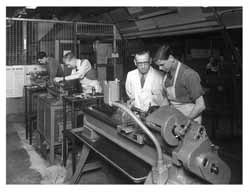 In October 1946 the first Marconi Apprentice Training Scheme was launched and I commenced my apprenticeship as an Instrument Maker at Pottery Lane, working in a variety of Nissen huts, a legacy of the war years. Mr Hitchens, the Training Manager at New Street, oversaw Mr Hillman and his team of instructors, gleaned from various areas within Marconi’s, such as Ted Cordery – Wiring Assembly, Charlie (‘File that flat for me’!) Sweetman – Instrument Making, Bob Thrift – Lathes (pictured on right), George Snow – Mills, John Cooper – Turrets, and Jack Whittaker – Sheet Metal. That winter was a reminder of the contract associated with apprenticeships. Whereas workshops at New Street closed down when employees couldn’t get to work due to heavy falls of snow, apprentices were expected at their daily workplace and I had to make my way from Great Baddow to Pottery Lane on foot. On one occasion John Cooper gave me a lift on his motor cycle from Longfield Road off Baddow Road (where John still lives), arriving two hours later, and then having to thaw out with the help of coke braziers – the only heating in the huts. John Atkins (son of Les Atkins, Tool Room Foreman), Bill ‘Baldy’ Brewer, Cyril Chorley, Alan Hart, Colin ‘Dingle’ Humphries, Tony Martin, Dennis Martin, Les Sayer, and Derek Tiffen (later to shine with Chelmsford City Football Club) were part of that first intake.
In October 1946 the first Marconi Apprentice Training Scheme was launched and I commenced my apprenticeship as an Instrument Maker at Pottery Lane, working in a variety of Nissen huts, a legacy of the war years. Mr Hitchens, the Training Manager at New Street, oversaw Mr Hillman and his team of instructors, gleaned from various areas within Marconi’s, such as Ted Cordery – Wiring Assembly, Charlie (‘File that flat for me’!) Sweetman – Instrument Making, Bob Thrift – Lathes (pictured on right), George Snow – Mills, John Cooper – Turrets, and Jack Whittaker – Sheet Metal. That winter was a reminder of the contract associated with apprenticeships. Whereas workshops at New Street closed down when employees couldn’t get to work due to heavy falls of snow, apprentices were expected at their daily workplace and I had to make my way from Great Baddow to Pottery Lane on foot. On one occasion John Cooper gave me a lift on his motor cycle from Longfield Road off Baddow Road (where John still lives), arriving two hours later, and then having to thaw out with the help of coke braziers – the only heating in the huts. John Atkins (son of Les Atkins, Tool Room Foreman), Bill ‘Baldy’ Brewer, Cyril Chorley, Alan Hart, Colin ‘Dingle’ Humphries, Tony Martin, Dennis Martin, Les Sayer, and Derek Tiffen (later to shine with Chelmsford City Football Club) were part of that first intake.
Click here for larger image
At the end of our first instructional year we went our various ways. I spent my second year in the Instrument Shop at New Street under Charlie Britten with Jack Stock as chargehand. In October 1948 I went to the Transmitter Development Labs in Building 46 under Mr. Burdick, Frank Bishop and Frank Newton, working directly with engineer Dennis Hart.
My final move was to join R & D Workshops at Great Baddow in the Instrument/Wiring Assembly Department under Superintendent Bill Bush and Chargehand Fred Leach. I reached twenty one at the end of my five year apprenticeship and moved into the skilled wage bracket, doubling my apprentice wage. Within a week I was back to £1 a week as I was off to do National Service in the RAF. In 1953 after demobilisation I returned to Baddow Workshop and the Assembly Shop with Gordon Denney now Superintendent. In 1957 the opportunity arose for me to join R & D Planning Department under Office Manager Bill Clayden, a staff position and pensionable! 1960 I became responsible for the planning in the Assembly Shop under the foremanship of Fred Leach. By 1963 George Williams, now Workshop Superintendent, had been asked by Ray Stiles, Manager, R & D Workshops, to nominate a suitable candidate to join a newly formed R & D Estimating Department. I accepted the challenge and after a stiff interview with Company Chief Estimator Harry Ashworth, found myself travelling every working day for twelve weeks on the company transport in the capable hands of ex bus driver Clarrie between Basildon and New Street, to learn basic estimating techniques in the Basildon Estimating Department.
In October 1963 four rookie estimators formed the R & D team under Works Estimator Ron Aston, situated in Harry Ashworth’s office area on the fourth floor of Marconi House, then to offices overlooking Section 120 underneath the canteen and finally a permanent base on the second floor of St Mary’s House, Victoria Road, all the time recruiting and training new staff. In 1972 the group, having covered all aspects of work associated with R& D Workshops at Building 29, Great Baddow, WHL and Writtle, was disbanded in a policy change and split down the middle with half the staff joining Communications Estimating Department at New Street and the rest of us setting up a new Radar Estimating Department at Writtle Road, under newly appointed Chief Estimator Les Biggs. Here again, from a handful of estimators in a small office in E Block we grew into a formidable office of sixteen experienced personnel based on the mezzanine floor overlooking the Chelmsford to London railway line. For the next twenty years I was involved with all aspects of manufacturing, budgetary and MOD technical costing on a wide range of radar and associated equipment As an aside, I was seconded to the Training Department together with John Benbow, Planning Manager, to head up and organise a first year Production Introduction Programme for GEC sponsored students studying at Bath and Bradford Universities and Portsmouth Polytechnic, to attend a twelve week course during their summer recess at Writtle Road. Their second rear summer course was spent in the commercial areas and third year in engineering. Throughout they were allotted engineering tutors: Chris Bousfield, Harry Fancy, Clive Gildersleeve, Paul Hibbert, Brian Partridge and Frank Savill, to guide them at Writtle Road. They wrote up an extensive thesis on their three years in industry and together with their academic successes achieved a Masters Engineering Degree. This involvement under industrial conditions was an ideal way of achieving an understanding of what to expect when they joined the Company after University as junior engineers. The programme continued for six years with a new intake each year.
During that time Estimating Manager Les Biggs was awarded an MBE in recognition of his liaison work between Radar Company and MOD Technical Costing Department, an award richly deserved and an honour for office personnel who supported him.
By November 1992 I had the opportunity to retire after 47 years of interesting and rewarding association with various sections of the Marconi Company, an experience I couldn’t have enjoyed if I had gone into retail grocery!
The visit of Admiral Grant, Christmas, 1945
Here are two further memories of Admiral Grant’s visit (2005 edition, page 2), the first from Audrey Bevan –
(For the picture of Admiral Grant Click here. Note that this copy has been edited slightly to remove scratches and fold marks. – Webmaster)
Just found time to peruse the Newsletter! Very interesting! I was there when Admiral Grant addressed us as his ‘Ship’s Company’. So was my father Richard Bevan.
Impossible to recognise anyone from this contrasty print – will the copy handed to you be available at the Reunion? (It wasn’t, but it will be this year. Ed.)
…and the second from Mrs J Mason.
I started work at Marconi’s in 1942, at the age of 14, and stayed for 46 years. I well remember the assemblies which Admiral Grant had in the Instrument Shop. Those who were not able to get there listened over the tannoy. They were quite morale boosters. He would tell us what we had achieved on production, and the bonus we would receive at the end of the year.
Some more Marconi bibliography
Jack Mayhew, who joined MWT in 1950 has written from his retirement home in Kwa-Zulu Natal, South Africa with the following list of books. He acquired the titles whilst researching a book on the history of telecommunications. He says: I have discovered that writing a book is a damn sight easier than getting it published!
A History of Wireless Telegraphy by J J Fahie.
First published in 1899 by Blackwood, subsequently reprinted in 2000 by Ayer Co in the USA. Interesting for two of its appendices; one is a reprint of Marconi’s patent and the other describes the researches of Professor Hughes. Bill Baker in his ‘History of the Marconi Company’ virtually dismisses Hughes but in fact his research in 1879 was reputed by some to have discovered Hertzian waves before Hertz, the coherer before Branly and wireless telegraphy before Marconi. He didn’t publish until 1899 just before his death and then only at the behest of Fahie.
Marconi and Wireless by R N Vyvyan.
It was originally published in 1933 as Wireless over Thirty Years by Routledge & Kegan Paul, and republished under the new title by EP Publishing. in 1974.
Vyvyan was of course one of Marconi’s well-known engineers.
Marconi & the discovery of Wireless by Leslie Reade. Published in 1963 by Faber & Faber.
Radio communications in Canada – an historical and technological survey by Sharon A Babiaan. Published 1992 by the National Museum of Science & Technology, Ottawa.
The Communications Miracle by John Bray. Published 1995 by Plenum Press.
Whisper in the Air – Marconi the Canada years 1902-1946 by Mary K McLeod. Published 1992 by Lancelot Press.
The Marconi Scandal by Frances Donaldson. Published 1962 by Rupert Hart-Davis.
And here are two titles from the editor’s collection.
Early Radio. In Marconi’s footsteps 1894 to 1920, by Peter R Jensen. Published in 1994 by Kangaroo Press.
2MT Writtle – the Birth of British Broadcasting by T.R. Wander. Published by Capella Publications in 1988
Marconi football referees
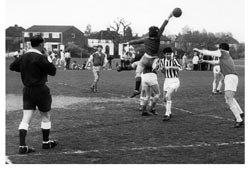 Just after distribution of the 2004 newsletter the editor received a letter from Ron Hurrell concerning the photo of a group of Marconi football referees appearing in it. The list of names in the caption was incomplete, and with his letter it was possible to fill in the gaps. However, there was no room to include this in the ‘05 newsletter, but we can do so now. In March 2004 Ron wrote:
Just after distribution of the 2004 newsletter the editor received a letter from Ron Hurrell concerning the photo of a group of Marconi football referees appearing in it. The list of names in the caption was incomplete, and with his letter it was possible to fill in the gaps. However, there was no room to include this in the ‘05 newsletter, but we can do so now. In March 2004 Ron wrote:
What a pleasant surprise to see in the 2004 issue of the Marconi Veterans’ newsletter a photo of football referees in the Marconi Companies. Perhaps Charlie Rand passed it on to you?
When I worked at R & D Estimating in St Mary’s House during the 60s, Dusty Miller the editor of the magazine and his staff were located on the floor above, and I got involved in producing an article about Marconi employees who turned out at weekends to referee football matches from club to county standard. The article was published in the Christmas edition of 1969 volume 20 number 5. So you can now fill in the blank names you were missing. Sadly as far as I know Fred King and Charlie Brown in the photo are no longer with us.
Football
Below left is the group photograph with the complete list of names. Above, is Ron in action refereeing a Marconi interdepartmental cup final in a photograph that headed the article in 1969 that he refers to. Ron’s letter also sent us a list of names, which we have omitted, of Marconi referees who were instrumental in the formation of the Essex Olympian Football League in 1966, later changed to the Essex International League. His letter went on:
Len Liddle was the founder chairman, I was honary secretary, Charles Rand fixture secretary and Gordon Evans came a year later as treasurer, serving many years. I ‘lasted’ five years and retired due to my two children needing my support but eventually came back in 1984 for another 17 eventful years. In 1966 the League consisted of twelve clubs from within Essex, and gradually enlarged to today’s three Premier Divisions and three Reserve Divisions. As a VIP I receive the results every week to keep me in touch. As a fitting record for Charlie Rand’s input for 34 years he was honoured with the office of patron.
Referees
 Marconi referees, back row, left to right: Derek Banes, Baddow; Peter Evans, Baddow; Peter Crisp, New Street; Brian Beetwell, EEV; Peter Parkhurst, Widford; Robin Lunniss, Waterhouse Lane; Ken Murton, Basildon.
Marconi referees, back row, left to right: Derek Banes, Baddow; Peter Evans, Baddow; Peter Crisp, New Street; Brian Beetwell, EEV; Peter Parkhurst, Widford; Robin Lunniss, Waterhouse Lane; Ken Murton, Basildon.
Middle row: Peter Simmons, Basildon; John Grottick, Basildon; Roger Wiseman, Marine Company; Charles Rand, New Street; Tony Harrington, New Street; Gordon Evans, Baddow; Fred King, EEV; Ron Hurrell, New Street.
Front row: John Russell, Baddow; Charlie Brown, Writtle; Len Liddle, ECFA Group 6 Officer, ex-referee; Bert Gilbert, Waterhouse Lane; Don Mott, New Street; John Pickering, New Street.
Click on image for a larger picture
I heard the loud bang!
Joan Wigley joined MWT when she left school at 14½ and remained with the company until early retirement in 1981. In her time she was responsible for staff records, apprentice and staff training administration at New Street, Marconi College , Baddow and EEV Waterhouse Lane. From 1942 to 1943, under compulsory call-up to industry for females aged 20 she carried out testing of components in Test Department. Recently she wrote about her experiences for an essay competiÂtion: the following extract is her memory of serving in Marconi’s ARP Gas Decontamination Section during the war years.
I had to learn all the gasses and treatment needed if gas was used in warfare. We rehearsed in protective clothing and Service gasmasks and had to test them in a van of gasses! On call duties each time the air raid siren went during working hours, off I went up the yard to the underground shelter with my respirator and tin hat to await the ‘all clear’ then back to work. I was on call one evening a week 6pm – 12. Many a time I cycled through Chelmsford during a raid with tin hat on and respirator on my handlebars! Marconi House had some bombing and one day the windows were broken and several of the staff on various floors formed a human chain and passed buckets and baskets of broken glass etc down from top floor to ground! Little did we know at the time that an unexploded bomb was just a few yards below us! We were sent home at once. A few hours later it had been detonated. At home I heard the loud bang!
The CH Tower at Baddow
Roy Simons
This tower, which is of steel and 360 feet high, is one of the three transmitting antenna towers originally erected at Canewdon in 1937, one of the first 20 East Coast Chain Home (CH.) (AMES Type I) stations which provided flood- light radar early warning and height finding, operating on frequencies from 20 to 30 MHz. The curtain arrays which these towers supported were supplied by the Marconi Company. It became operational in mid 1938 and continued throughout the war, but, from 1940, when the Germans introduced jamming and from 1942 when jamming was much more intense, and 200 MHz and 600 MHz equipments became available, the significance was reduced. Also, the Germans, in 1944, used the transmissions from our CH stations to pick up RAF aircraft, using bi-static techniques. This resulted in our ‘jittering’ of the transmissions and the possibility of switching off the CH transmitters, when RAF aircraft were airborne.
There was considerable policy debate at the highest level in the Air Ministry after the war on the future radar defence system. After many variations, as late as 1950, 26 CH (subsequently revised to 28) stations were to be retained, but Canewdon was not one of these. These refurbished CH stations were completed by April 1953.
With the arrival of the Type 80 radars, which were being installed at GCI stations, it became clear that these new stations had greater and better coverage than the CH stations, which were then progressively taken out of service.
When the Blue Streak missile project was in progress, Baddow received the contract to design the radio guidance system. In order to provide a simulation of a receding missile at a high angle of elevation, this CH tower from Canewdon was disÂmantled and erected (by a firm of German riggers) at Baddow in 1956. However, in 1957 the guidance for Blue Streak was changed to inertial guidance and the tower became redundant for its original purpose on this site. So possibly were the many engineers on that Project. However Dr Eastwood implemented the development of commercial 50cm radar based on the Type 11. This new radar work employed the ‘spare’ engineers and became the S232 and then the S264 radars.
It was almost immediately used as a radar link tower to bring signals from Rivenhall and Bushy Hill into Baddow using the 360 foot platforms.
Subsequently the ‘Winkle’ project required, in 1964, the establishing of a long base line from Bushy Hill, where a high speed aerial was installed, to RRE at Great Malvern using the ‘Blue Yeoman’ (experimental Type 85) radar. The tower, with equipment in a hut at the 200 foot platform and a reflector at 360 feet was a relay point to two further repeater sites to RRE.
See The GEC Journal of Research Vol 3 No 2 1985 for a detailed description of CH by the late Bruce Neale of Marconi Radar Systems Ltd.
The tower is an historical monument to our country’s technological past, but not many would claim that it enhances the locality aesthetically. Indeed, a letter in the Essex Chronicle a couple of years ago suggested that it was redundant, an eyesore, and should be demolished. Is it still in use at Baddow, or is it now completely redundant? The mast at Bawdsey was dismantled some years ago. Other than the one at Great Bromley how many more are there around the country? Is it under threat? Does it matter? Ed .
Snippets
In the last newsletter, pages 8 and 9 carried reminiscences by Ron Kitchen. In his first paragraph he remembered during his first wartime posting in the RAF at West Drayton doing acceptance testing on the first 1kW VHF transmitters and nearly coming to a sticky end as a result of the designer’s failure to interlock the door to the lecher bars, and he hoped that that designer was not Bill Barbone. Bill Barbone would like it to be known that he was definitely not that designer.
Stanley Fisher sent very a brief note to Barry Powell promising a recent picture of him outside the New Street entrance for the newsletter. His note went on to say:
Walked through the door there August 1936 for a job interview with Dr S Long – started in the Standards Room Sept 1936. Now 83 – number one son Roy Fisher is at New Street still. Congrats on your info about the museum affair. Sorry state!
Also in the last newsletter we included on page 11 a photograph of the Marconi Fire Brigade, with a plea for a date and the names of the individuals in the picture. Alan Munday and C Leveridge responded with a list of names and the date. The photo first appeared in the November 1959 edition ‘The Marconi Companies and their People’ (price sixpence and printed on high quality heavyweight art paper!) accompanying a report of the Inter-works Fire Brigades competition for the John Rogers Shield at Waterhouse Lane. In the photo with the John Rogers Shield and other trophies are, back row (left to right): Arthur Leveridge, Percy Holland, Jock Muir, Graham Murdy, Trevor Lodge, Bill Rose, Bert Bartlett, Ninian Pugh. Middle row: R Traylor, Norman Williams, G McIlveen, Jan Frewer, Peter Buers, Bill Nurse, Alan Munday, Bill Pain. Front row: T Hull, Chief Officer Harry McCarthy, Deputy Chief Officer Bill Munday, Reg Fisher
Baddow and the development of TV
Doug (DA) Paynter
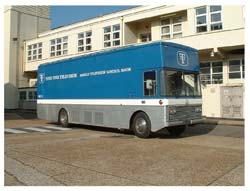 An awful lot is written on the subject of the early history of the Marconi Company, but very little is heard of its activities in more recent years.
An awful lot is written on the subject of the early history of the Marconi Company, but very little is heard of its activities in more recent years.
I was invited to join the company by Sir Eric Eastwood in 1956 and started work at the Research Labs at Great Baddow where I remained until retirement in 1984. At about that time the final stages of development of the Mk 4 studio TV camera were taking place. Nothing has had a greater effect on society than the introduction of TV.
The first transmission of high definition TV took place in the 1930s at Alexandra Palace with two rival systems, Baird and Marconi EMI. The latter system was superior and was adopted for regular transmissions until the outbreak of war in 1939. The Marconi contribution to this installation was the innovative vhf transmitter. When this finally closed down the transmitter ended up in the foyer of Building 46, New Street.
When post-war TV transmission resumed in 1946 the Company planned to manufacture complete systems including studio equipÂment. It was part of this programme which resulted in the camera development at Baddow. When I arrived in 1956, studios had been set up in two garages at Baddow: they are still there.
I understand at the peak of production 40% of the world’s TV studios used Marconi Mk 4 cameras. Marconi became a leading player in the world of television. The Propagation Group in Baddow, in conjunction with the BBC, planned the new network of TV stations across the UK and the fm broadcast network.
Click on image for a larger picture
A very tenuous connection with the adjacent article by Doug Paynter: he does mention the Marconi OB units used at Princess Diana’s wedding. Paul Marshall, formerly of TDU Waterhouse Lane, has completely renovated this former Tyne-Tees Television OB van and its equipment: he brought it to the Broadcasting Division Studio reunion last October. Enthusiastic engineers, Paul and his wife have obtained quantities of Marconi TV equipment over some years, updated it and fitted some of it into OB vehicles.
The TV broadcast of Princess Diana’s wedding was greatly assisted by Marconi personnel and OB units hired by the BBC for the occasion. Studios were created at Waterhouse Lane and were used to train camera crews for the new ITV network.
The above is just one example of the contribution of Baddow to the society that we know today, others include the UK radar defence system, military communications and many more.
Incidentally, Dr Eastwood expressed the view to me that work should be fun. As part of this philosophy he created the Marconi Sailing Club on the Blackwater which is still thriving today.
The creation of the big picture (or, how policy is really made)
In the beginning was the plan and then came the assumptions and the assumptions were without form and the plan was completely without substance and the darkness fell upon the face of the engineers. And they spake unto their team leaders saying: ‘It is a crock of ordure and it stinketh.’ And the team leaders went unto their project manager and said: ‘It is a pail of dung and none may abide the odour thereof.’
And the Project Manager went to the Engineering Manager and said: ‘It is a container of excrement and it is very strong, such that none may abide it.’
And the Engineering Manager went to the Technical Manger and said unto him: ‘It is a vessel of fertilizer and none can abide its strength.’
And Engineering Manager went to the Divisional Manager and said unto him: ‘It contains that which aids plant growth and is very strong.’
And the Divisional Manager went to the General Manager and said unto him: ‘It promoteth growth and it is very powerful.’
And the General Manager went to the Chairman and said unto him: ‘This powerful new plan will actively promote the growth and efficiency of the company.’
And lo, the Chairman looked upon the plan and saw it was good.
Sent in by S P Holt. It arrived in RAF uniform but was demobbed by the editor before setting it on the page
The Marconi Statue still awaiting an appropriate site
Peter Turrall

Unveiled by Princess Elettra some three years ago, the Marconi statue, commissioned by Chelmsford Borough Council, still stands in the bowels of the Essex Record Office in Navigation Road Chelmsford. This is right off the beaten track and only a few people ever see it.
In an effort to get the statue in a more prominent position, we invited the cabinet member of Chelmsford Borough Council for Arts and Entertainment to be our guest at the annual Marconi Veterans’ Reunion earlier this year. In his speech Councillor Christopher Kingsley, a one-time Marconi graduate apprentice and engineer, outlined the council’s plans for the statue to be erected in the centre of Chelmsford High Street near the TSB Bank. He received loud applause from the 250 Veterans present.
Following this meeting, I was asked to be the MVA’s representative on a small committee designing the plinth and also the stand on which the statue would be placed. The proposed details and costs were submitted to a pre-meeting of the cabinet and were turned down with a comment that an alternative site near the Essex Records Office or where the old bus station stood should be offered. I attended the next meeting with the planning department of the council, and advised them that the alternative sites had no appeal whatsoever to ex-Marconi people, and that Chelmsford should be really proud of the work Guglielmo Marconi and his employees did in Chelmsford, and the wealth it brought not only to the council, but all the local businesses and shops.
Furthermore, I advised them that Marconi led the world in electronic communication, and radar, satellite, airborne, research, communication, and many other inventions and manufacture were carried out in Chelmsford. Marconi was the last bastion of engineering in this town. Why does not the council recognise these and other achievements by local industries? There is no tourist information centre, and for a county town this is shameful, as visitors arriving have no knowledge of the achievements or activities of the town itself.
A very strong letter was sent on behalf of our Veterans’ Association to the leader of the council and copied to senior executives protesting at this sleight on the achievements of our Founder and former employees, and requesting that the statue be placed as originally agreed in the centre of the town. We await the leader of the council’s comments.
KK Pang – our man In Hong Kong
 Sadly we report the death of Kuo Kuan Pang (better known as KK) who died in his sleep in Hong Kong one month short of his 102nd birthday.
Sadly we report the death of Kuo Kuan Pang (better known as KK) who died in his sleep in Hong Kong one month short of his 102nd birthday.
KK was for many years our contact in Hong Kong when he worked for the old Marconi Hong Kong organisation. When this company ceased operations, KK joined a new set up under the name of Marchilem and still maintained contact with UK-based Marconi units and especially with MCSL, MRSL and EEV. His son Francis (better known as Jimmy) who lives in Chelmsford went to the funeral in Hong Kong where he was joined by his sister who travelled from Australia where she lives.
KK was a real pioneer who in the very early days of wireless worked alongside Guglielmo Marconi when he set up a factory in Shanghai. KK worked in the factory as manager before fleeing the country when difficult times were encountered. He came to Hong Kong where he married his wife and settled down to a family life. He lost his wife, who at one time was secretary to the manager of Hong Kong Office, Mr. Richards, some five years ago.
KK was President of the Marconi Veterans’ Association in 1979, an office of which he was extremely proud and very grateful for the honour bestowed on him as an employee of well over fifty years service.
Our condolences have been sent to his family.
Obituaries
Obituaries have been posted on the web site at various times over the past year. The latest deaths notified are shown in this index. To view earlier notifications please go to the Archive.

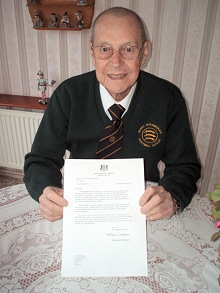
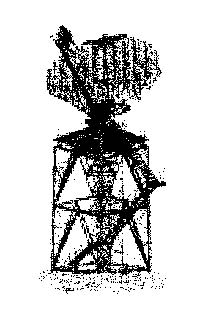
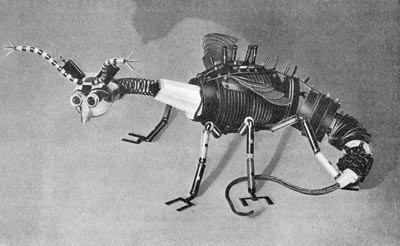
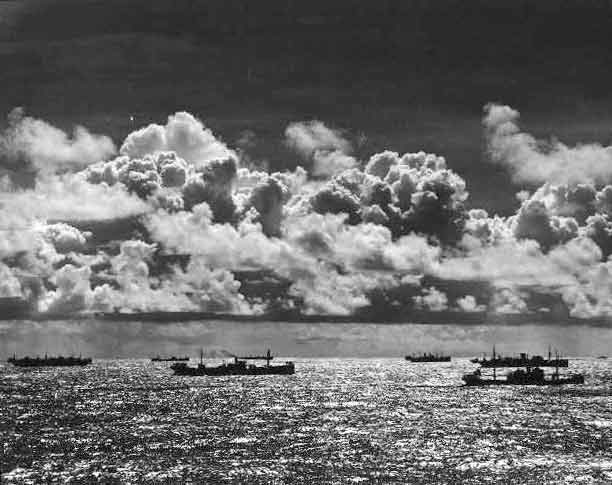
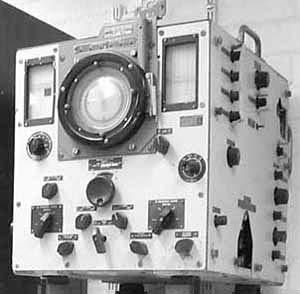

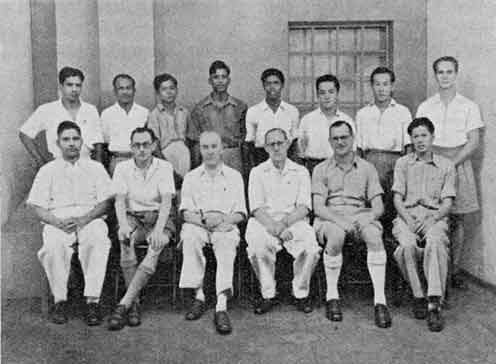
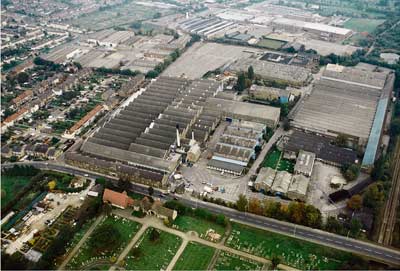
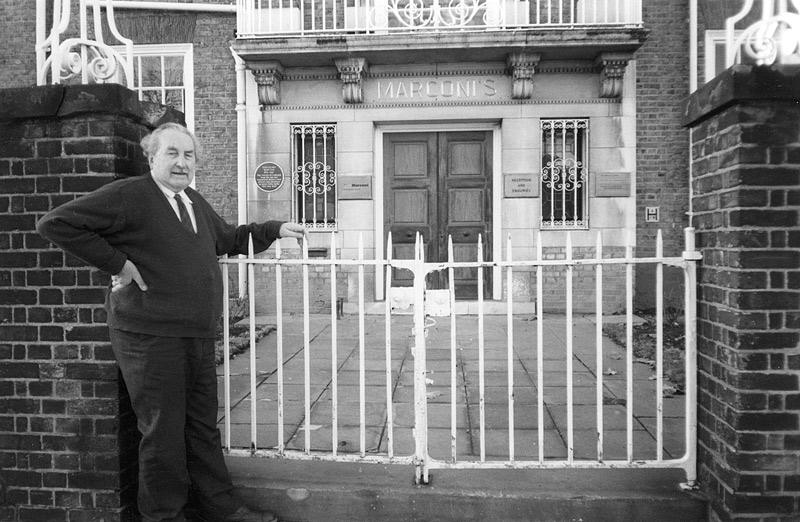
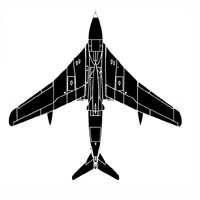
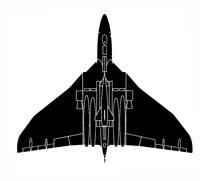
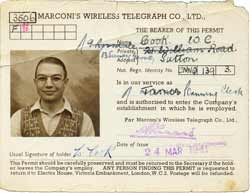
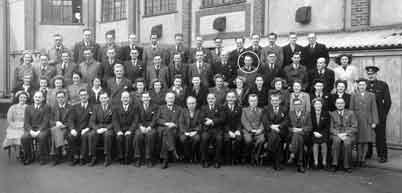

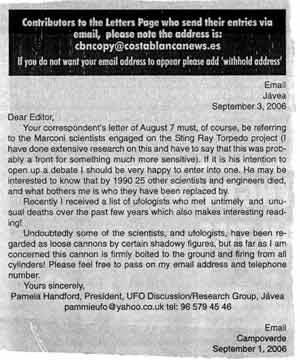
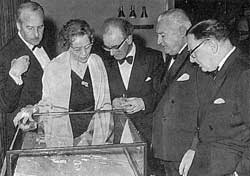
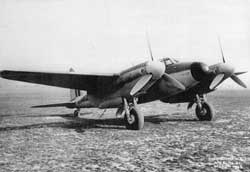
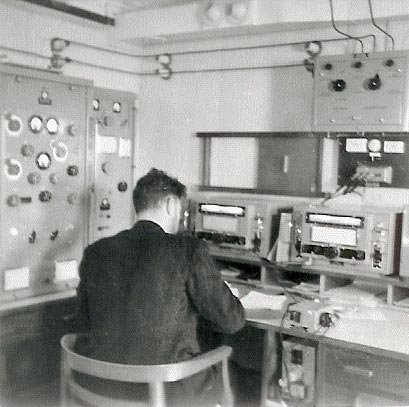
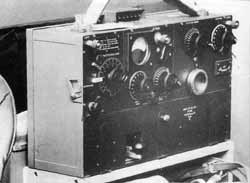
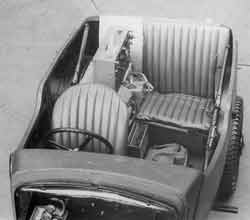


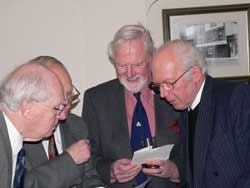

 The death occurred on 1st November 2005 at Stow-cum-Quy in Cambridgeshire of John W Sutherland who for many years was Managing Director of Marconi Radar Systems, situated at the old Crompton site in Writtle Road, Chelmsford.
The death occurred on 1st November 2005 at Stow-cum-Quy in Cambridgeshire of John W Sutherland who for many years was Managing Director of Marconi Radar Systems, situated at the old Crompton site in Writtle Road, Chelmsford.
 In October 1946 the first Marconi Apprentice Training Scheme was launched and I commenced my apprenticeship as an Instrument Maker at Pottery Lane, working in a variety of Nissen huts, a legacy of the war years. Mr Hitchens, the Training Manager at New Street, oversaw Mr Hillman and his team of instructors, gleaned from various areas within Marconi’s, such as Ted Cordery – Wiring Assembly, Charlie (‘File that flat for me’!) Sweetman – Instrument Making, Bob Thrift – Lathes (pictured on right), George Snow – Mills, John Cooper – Turrets, and Jack Whittaker – Sheet Metal. That winter was a reminder of the contract associated with apprenticeships. Whereas workshops at New Street closed down when employees couldn’t get to work due to heavy falls of snow, apprentices were expected at their daily workplace and I had to make my way from Great Baddow to Pottery Lane on foot. On one occasion John Cooper gave me a lift on his motor cycle from Longfield Road off Baddow Road (where John still lives), arriving two hours later, and then having to thaw out with the help of coke braziers – the only heating in the huts. John Atkins (son of Les Atkins, Tool Room Foreman), Bill ‘Baldy’ Brewer, Cyril Chorley, Alan Hart, Colin ‘Dingle’ Humphries, Tony Martin, Dennis Martin, Les Sayer, and Derek Tiffen (later to shine with Chelmsford City Football Club) were part of that first intake.
In October 1946 the first Marconi Apprentice Training Scheme was launched and I commenced my apprenticeship as an Instrument Maker at Pottery Lane, working in a variety of Nissen huts, a legacy of the war years. Mr Hitchens, the Training Manager at New Street, oversaw Mr Hillman and his team of instructors, gleaned from various areas within Marconi’s, such as Ted Cordery – Wiring Assembly, Charlie (‘File that flat for me’!) Sweetman – Instrument Making, Bob Thrift – Lathes (pictured on right), George Snow – Mills, John Cooper – Turrets, and Jack Whittaker – Sheet Metal. That winter was a reminder of the contract associated with apprenticeships. Whereas workshops at New Street closed down when employees couldn’t get to work due to heavy falls of snow, apprentices were expected at their daily workplace and I had to make my way from Great Baddow to Pottery Lane on foot. On one occasion John Cooper gave me a lift on his motor cycle from Longfield Road off Baddow Road (where John still lives), arriving two hours later, and then having to thaw out with the help of coke braziers – the only heating in the huts. John Atkins (son of Les Atkins, Tool Room Foreman), Bill ‘Baldy’ Brewer, Cyril Chorley, Alan Hart, Colin ‘Dingle’ Humphries, Tony Martin, Dennis Martin, Les Sayer, and Derek Tiffen (later to shine with Chelmsford City Football Club) were part of that first intake. Just after distribution of the 2004 newsletter the editor received a letter from Ron Hurrell concerning the photo of a group of Marconi football referees appearing in it. The list of names in the caption was incomplete, and with his letter it was possible to fill in the gaps. However, there was no room to include this in the ‘05 newsletter, but we can do so now. In March 2004 Ron wrote:
Just after distribution of the 2004 newsletter the editor received a letter from Ron Hurrell concerning the photo of a group of Marconi football referees appearing in it. The list of names in the caption was incomplete, and with his letter it was possible to fill in the gaps. However, there was no room to include this in the ‘05 newsletter, but we can do so now. In March 2004 Ron wrote: Marconi referees, back row, left to right: Derek Banes, Baddow; Peter Evans, Baddow; Peter Crisp, New Street; Brian Beetwell, EEV; Peter Parkhurst, Widford; Robin Lunniss, Waterhouse Lane; Ken Murton, Basildon.
Marconi referees, back row, left to right: Derek Banes, Baddow; Peter Evans, Baddow; Peter Crisp, New Street; Brian Beetwell, EEV; Peter Parkhurst, Widford; Robin Lunniss, Waterhouse Lane; Ken Murton, Basildon. An awful lot is written on the subject of the early history of the Marconi Company, but very little is heard of its activities in more recent years.
An awful lot is written on the subject of the early history of the Marconi Company, but very little is heard of its activities in more recent years.
 Sadly we report the death of Kuo Kuan Pang (better known as KK) who died in his sleep in Hong Kong one month short of his 102nd birthday.
Sadly we report the death of Kuo Kuan Pang (better known as KK) who died in his sleep in Hong Kong one month short of his 102nd birthday.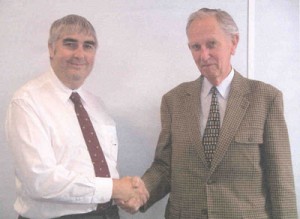
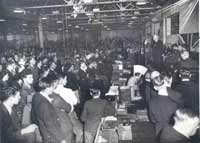
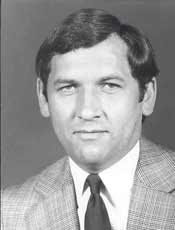
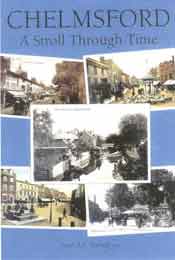 Copies of the Editors book pictured here are now available price £5.00 plus 75p postage and packing. 50% of the price goes towards Marconi Veterans Association Funds. Send your cheque made out to Peter Turrall c/o Marconi Veterans Secretary, Barry Powell at Selenia Communications Ltd., Marconi House, New Street, Chelmsford, Essex, CM1 1PL.
Copies of the Editors book pictured here are now available price £5.00 plus 75p postage and packing. 50% of the price goes towards Marconi Veterans Association Funds. Send your cheque made out to Peter Turrall c/o Marconi Veterans Secretary, Barry Powell at Selenia Communications Ltd., Marconi House, New Street, Chelmsford, Essex, CM1 1PL.

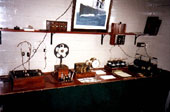
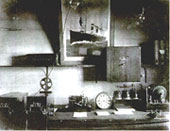



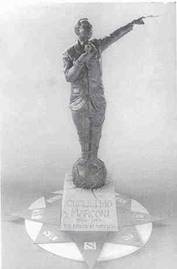

 The Editor will once again present one of his own books “Chelmsford, a Stroll through Time†recently published and covering life in the town in the late 1940’s as seen through the eyes of himself to the three best captions received.
The Editor will once again present one of his own books “Chelmsford, a Stroll through Time†recently published and covering life in the town in the late 1940’s as seen through the eyes of himself to the three best captions received.


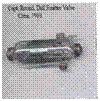
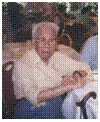


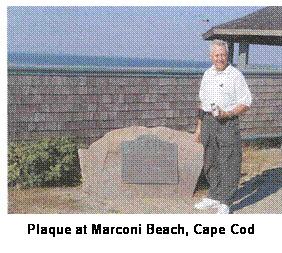 Despite spending four years at MC Inc in Washington I never managed to visit New England in the Fall, so this year with my wife Jean I set out to not only see the fall but to seek out a couple of Marconi related areas of interest in this part of the USA. Our trip started in Cape Cod area where I had read the first transatlantic radio station had been established. Sure enough on the second day on the road to Provincetown we came across a sign to Marconi Beach (South Wellfleet) and the site of Marconi’s first wireless site in the USA. A small visitors centre and plaque record where the first US commercial wireless station was established.
Despite spending four years at MC Inc in Washington I never managed to visit New England in the Fall, so this year with my wife Jean I set out to not only see the fall but to seek out a couple of Marconi related areas of interest in this part of the USA. Our trip started in Cape Cod area where I had read the first transatlantic radio station had been established. Sure enough on the second day on the road to Provincetown we came across a sign to Marconi Beach (South Wellfleet) and the site of Marconi’s first wireless site in the USA. A small visitors centre and plaque record where the first US commercial wireless station was established.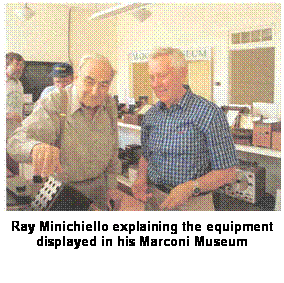 Leaving Cape Cod we headed for New Hampshire to call in on the Marconi Museum. We found it located in a beautiful leafy suburb of Bedford. The Museum is the result of ten years planning by Ray Minichiello P.E. and his wife Dr. Pricilla Cusi. It is located in an old school house which after extensive renovation provides an excellent home for the extensive collection that Ray has assembled during his career with the General Electric Company. Besides having some very early Marconi equipment including a spark transmitter, there is a very interesting collection of early commercial and domestic American radio equipment including some beautiful three valve receivers which besides providing radio reception were built as works of art to be proudly displayed. Ray had even obtained the original station plaque from the Cape Cod station. While we were there we met some of the volunteer support group who help to run the museum. Why has Ray who never worked for Marconi devoted himself to establishing the Museum and its foundation? When he was five his father took the young Ray along to meet Guglielmo Marconi and he has never forgotten the great man and that he patted him on the head. If you have an opportunity and are in the area the Museum is a must for any Marconi Veteran. I can guarantee a warm reception, if you can go look out any old equipment or documents they would be most welcomed.
Leaving Cape Cod we headed for New Hampshire to call in on the Marconi Museum. We found it located in a beautiful leafy suburb of Bedford. The Museum is the result of ten years planning by Ray Minichiello P.E. and his wife Dr. Pricilla Cusi. It is located in an old school house which after extensive renovation provides an excellent home for the extensive collection that Ray has assembled during his career with the General Electric Company. Besides having some very early Marconi equipment including a spark transmitter, there is a very interesting collection of early commercial and domestic American radio equipment including some beautiful three valve receivers which besides providing radio reception were built as works of art to be proudly displayed. Ray had even obtained the original station plaque from the Cape Cod station. While we were there we met some of the volunteer support group who help to run the museum. Why has Ray who never worked for Marconi devoted himself to establishing the Museum and its foundation? When he was five his father took the young Ray along to meet Guglielmo Marconi and he has never forgotten the great man and that he patted him on the head. If you have an opportunity and are in the area the Museum is a must for any Marconi Veteran. I can guarantee a warm reception, if you can go look out any old equipment or documents they would be most welcomed.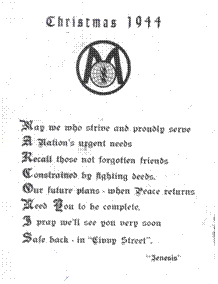
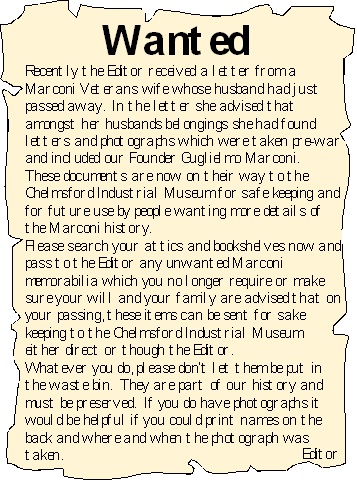

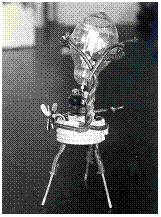
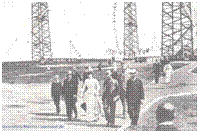


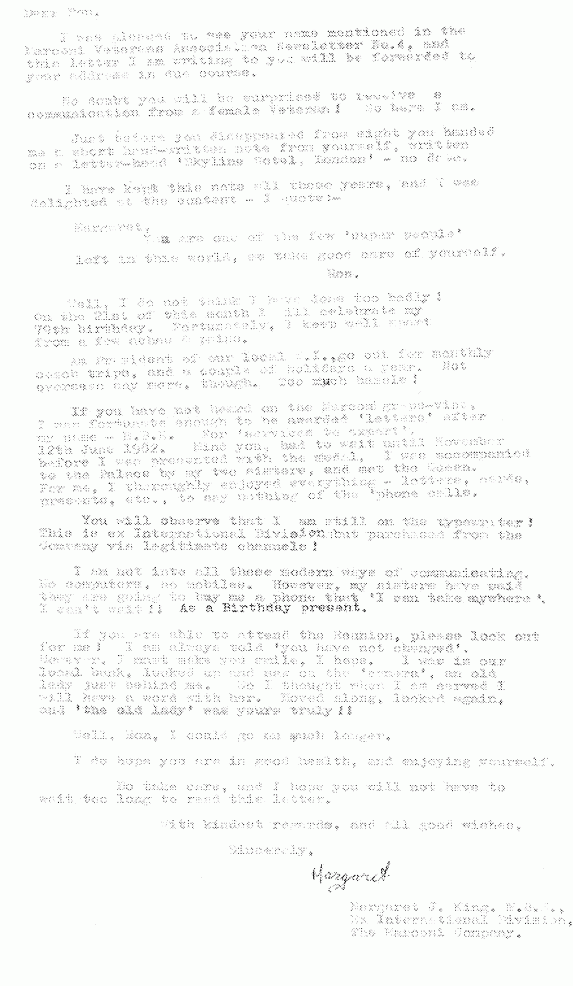

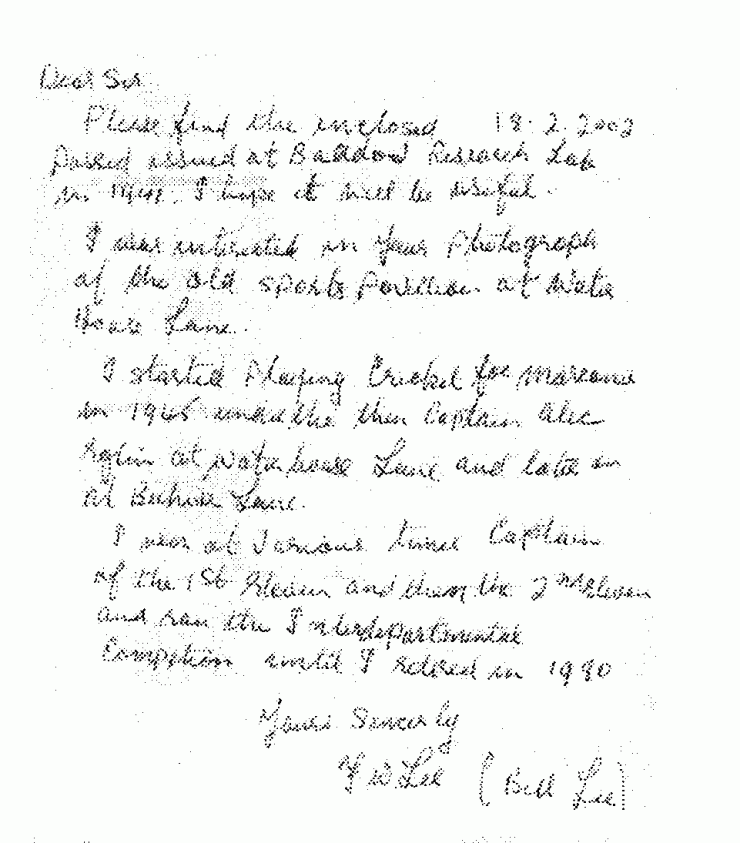
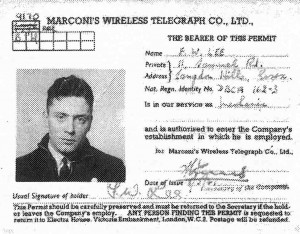
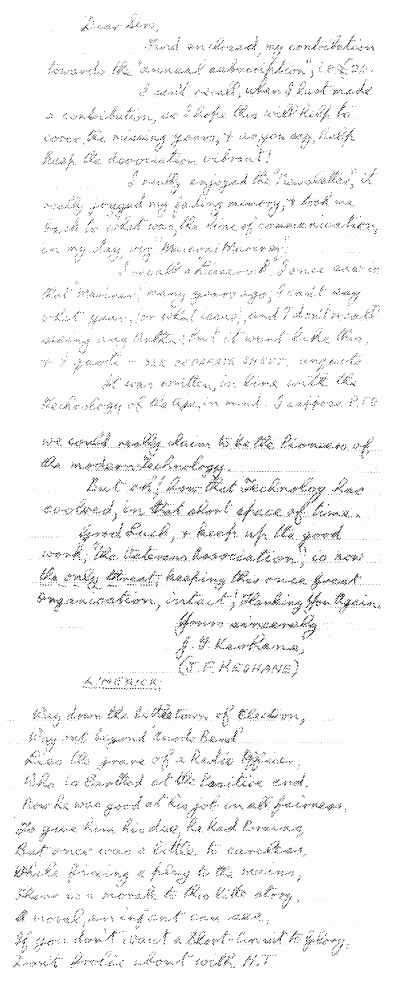 From Peter Helsdon
From Peter Helsdon
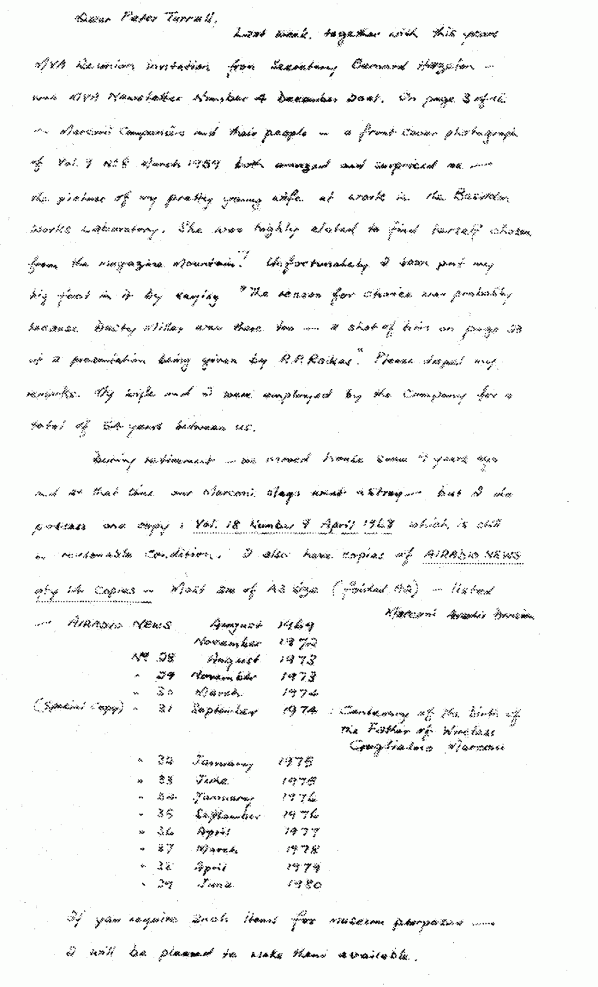 From Leonard Oakes
From Leonard Oakes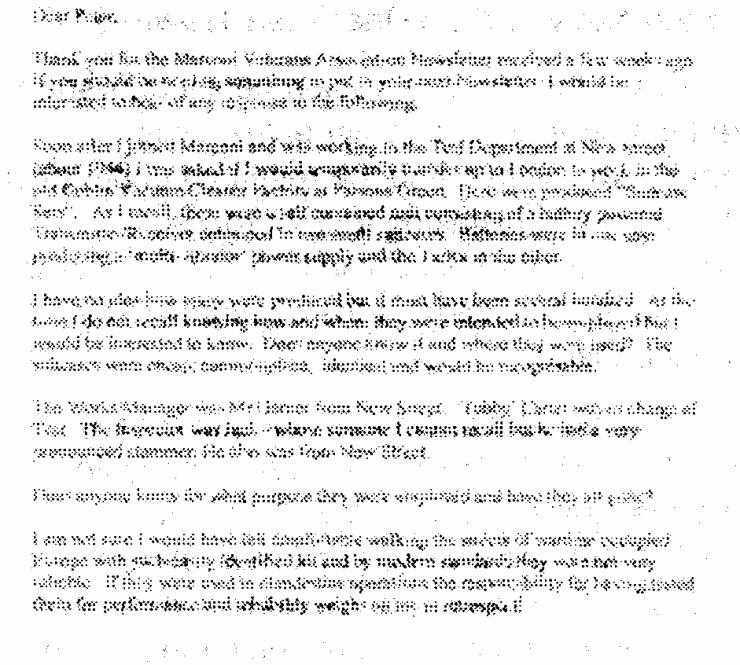 From Charles Boyton
From Charles Boyton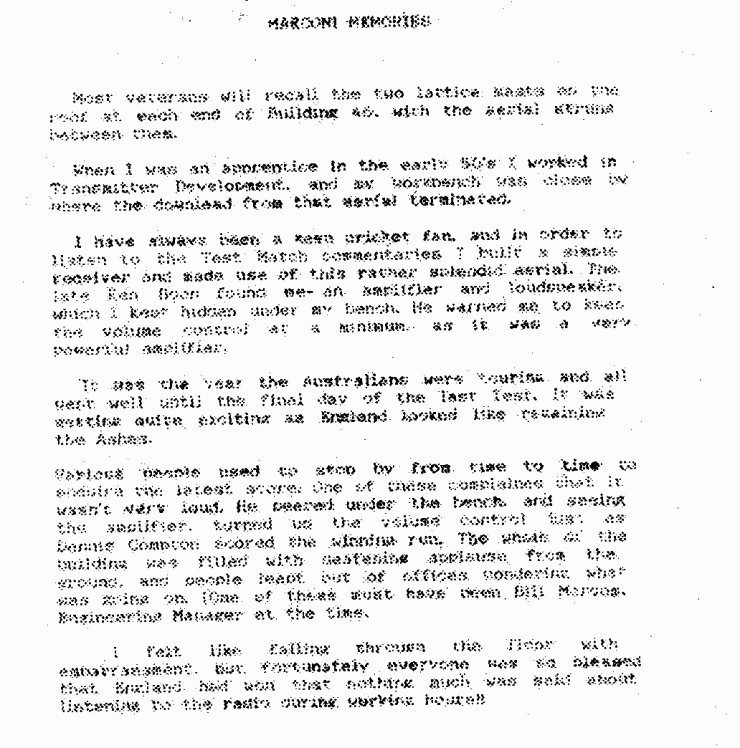
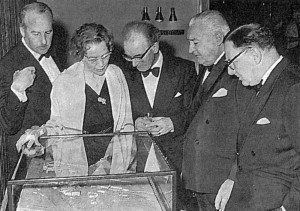
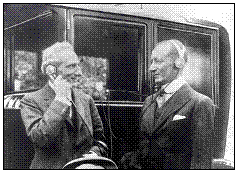
 A very great honour has been bestowed (in-absenta) on our Founder by commemorating his achievements one hundred years ago on a new £2 Coin which will be available to the general public in April 2001. The coin was unveiled at a special ceremony held at Broadcasting House in October where Princess Elettra was present with the Managing Director of the Royal Mint. Many other dignitaries were also present and it was a great pity that the authorities that arranged this were unable to send an invitation for The Marconi Veterans Association representatives to be present. We have asked that in future we receive invitations for any unveiling or Centenary events which might take place over the coming years.
A very great honour has been bestowed (in-absenta) on our Founder by commemorating his achievements one hundred years ago on a new £2 Coin which will be available to the general public in April 2001. The coin was unveiled at a special ceremony held at Broadcasting House in October where Princess Elettra was present with the Managing Director of the Royal Mint. Many other dignitaries were also present and it was a great pity that the authorities that arranged this were unable to send an invitation for The Marconi Veterans Association representatives to be present. We have asked that in future we receive invitations for any unveiling or Centenary events which might take place over the coming years.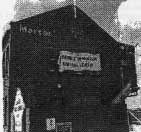
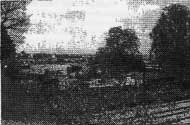 The old Crompton Factory Site in Writtle Road Chelmsford. The last Marconi Radar Company to be established has been razed to the ground and the only part remaining is the building fronting Writtle Road. Light Industrial Units and housing are planned for this most valuable area. Even the little house, which was adjacent to the railway, has disappeared (see photograph).
The old Crompton Factory Site in Writtle Road Chelmsford. The last Marconi Radar Company to be established has been razed to the ground and the only part remaining is the building fronting Writtle Road. Light Industrial Units and housing are planned for this most valuable area. Even the little house, which was adjacent to the railway, has disappeared (see photograph).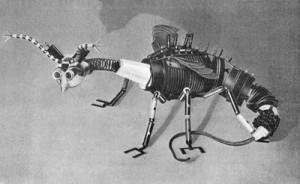 Squigger-bug – Parasiticus Preposterosus. Germinated, incubated and brought to maturity in the laboratory of the Marconi Wireless Telegraph Marine Development Section 1B. Chelmsford
Squigger-bug – Parasiticus Preposterosus. Germinated, incubated and brought to maturity in the laboratory of the Marconi Wireless Telegraph Marine Development Section 1B. Chelmsford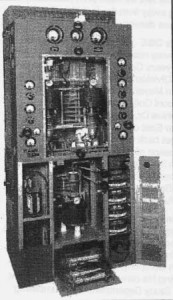 In August1941, I joined the Staff of Power Test at a yearly salary of £156 first working Marine Equipment including Lifeboat Spark Transmitters. At that time Test was treated as an extension of Development so I was able to help A W Lay with his Medical Diathermy Machines which because they allowed bloodless surgery were used to save lives of hundreds of soldiers wounded in the battle-fields North Africa. Later in the War these Spark Diathermy machines were used to jam the German Bomber navigational systems.
In August1941, I joined the Staff of Power Test at a yearly salary of £156 first working Marine Equipment including Lifeboat Spark Transmitters. At that time Test was treated as an extension of Development so I was able to help A W Lay with his Medical Diathermy Machines which because they allowed bloodless surgery were used to save lives of hundreds of soldiers wounded in the battle-fields North Africa. Later in the War these Spark Diathermy machines were used to jam the German Bomber navigational systems.